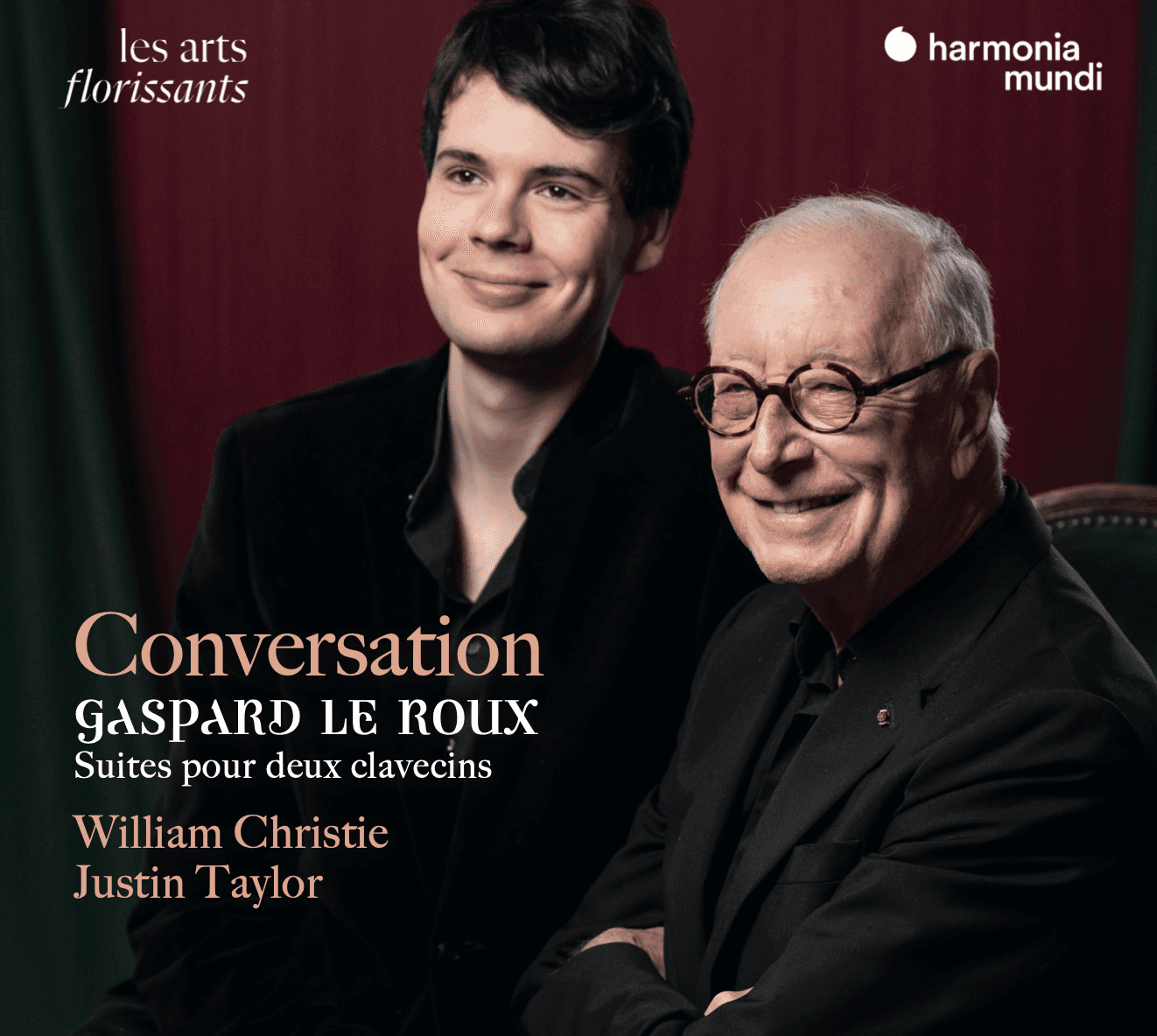Harpsichord Duo
Soloists
- William Christie, harpsichord
- Justin Taylor, harpsichord
THOMAS TOMKINS (1572–1656)
Fancy for Two to Play
GILES FARNABY (1560–1640)
For Two Virginals
GEORGE FRIDERIC HANDEL (1685–1759)
Suite for Two Harpsichords in C Minor, HWV 446
HENRY PURCELL (1659–1695)
Ground, Z 221
Trumpet Tune, called “The Cibell”
Trumpet Tune, ZT 698
GASPARD LE ROUX (c. 1660 – c. 1707)
Suite in A Minor
FRANÇOIS COUPERIN (1668–1733)
Musette de Choisi
Musette de Taverny
GASPARD LE ROUX (c. 1660 – c. 1707)
Suite in F Major
FRANÇOIS COUPERIN (1668–1733)
Le Ménetou
JEAN-BAPTISTE LULLY (1632–1687)
Le Bourgeois Gentilhomme (excerpt)
March for the Ceremony of the Turks
JEAN-PHILIPPE RAMEAU (1683–1764)
Les Sauvages
Duration: 55 minutes (excluding intermission)
 Jay-Qin
Jay-QinSyn-phony: to sound together. This concert invites us into a polyphonic conversation between two harpsichords, where William Christie and Justin Taylor—both deeply passionate about this repertoire—champion works rich in inventiveness and emotion.
This dialogue finds its roots in French music, whose refinement in harpsichord writing is unparalleled. Alongside the two great masters François Couperin and Jean-Philippe Rameau, the central figure of this programme is one Gaspard Le Roux. His life, so secretive and mysterious, has even led some to speculate that his name might be a pseudonym—perhaps for Marin Marais, d’Anglebert the younger, or Delalande? Whatever the truth may be, Le Roux’s pieces display remarkable sensitivity and depth, worthy of the finest works of his era. He elevates the legacy of the 17th-century French harpsichord school (Chambonnières, d’Anglebert…) with a style that is both original and poetic. In the preface to his 1705 publication, the composer encourages performers to take up this two-harpsichords repertoire: “most of these pieces are effective on two harpsichords, one playing the subject, the other the counterpoint.” As for Armand-Louis Couperin, cousin to François Couperin, he foreshadows the emergence of the classical style with dazzling virtuosity—a true firework display of plucked strings.
William Christie and Justin Taylor—master and kindred spirit—intertwine their perspectives and styles in a wordless dialogue, where each piece becomes a reply, a memory, a confidence. From Tomkins' English fantasy to the French arabesques of Rameau, by way of Purcell, Le Roux, Couperin, and Handel, this programme reveals tender or playful contrasts and resonances born of their deep musical understanding.
In this sacred and secular musical conversation, sonic arcs and arrows unfold like vibratory threads within a baroque edifice that is ever being rewritten in the present.
![logo des arts florissants z-[200]](/_next/static/media/logo-menu-black.27dda4ca.svg)
